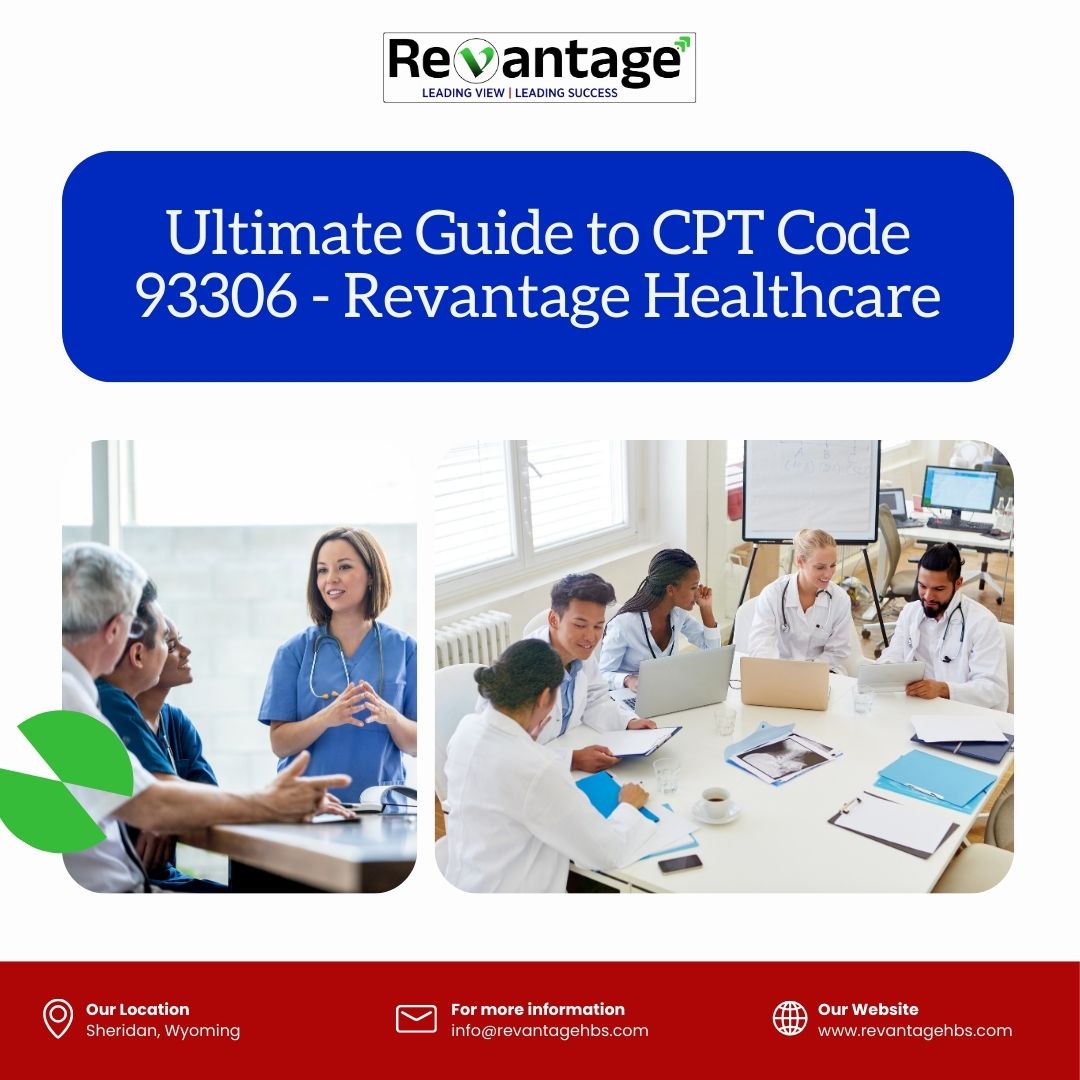Accurate Medical billing processes give critical financial discipline for a healthcare practitioner’s office. With the implementation of new coding systems ICD-10 alongside updated HCPCS for 2025, compliance optimization has reached its apex. Revantage Healthcare will continue to walk with you through these changes so that your practice may persist amid continuous industry shifts. This blog post outlines the fundamental updates for the 2025 coding, where we provide useful tips on billing as well as explain the ways in which our professional services anticipate your requirements. Let us begin if you are prepared to bolster your earnings.
Why Coding Updates Matter in 2025
Annually, Medicare and Medicaid (CMS) and the American Medical Association (AMA) proactively adjust their medical coding systems to account for emerging healthcare needs, newly instituted policies, and other unique changes. For 2025, these updates hit particularly hard with over 400 new ICD-10 codes, 250 revised CPT codes, and updates to HCPCS Level II for supplied goods and services. These updates change nearly every aspect of documenting patient interaction to claim submission in pursuit of obtaining reimbursements.
Payment denials, late reimbursements, or even audits are not uncommon with missed or incorrect codes, which can cost your practice thousands in lost revenue. Improper coding accounts for approximately thirty percent of all initial claim denials, which highlights the problem at hand. Achieving mastery over the 2025 updates will help you significantly reduce denial rates, speed up payments, and achieve compliance.
Key Updates to Watch: 2025 Coding Updates
Here is a summary of the coding updates for 2025 that will significantly impact your practice:
The 2025 ICD-10-CM code set has an increase of 420 new codes; however, 230 codes were deleted and 150 were revised. A bigger focus was placed on specificity concerning diabetes, rare diseases, and mental health disorders. For instance, new codes for complications of diabetes and social determinates of health (SDOH) now require justification through detailed documentation.
Impact: Staff training needs to be structured around accurately capturing the new details provided in the documents, or else practices risk underpayment/reimbursement supersedes expectations.
CPT Code Changes: Focus on Technology and Telehealth
The AMA added 270 CPT codes and modified 400 others while paying attention to new technology developments, such as AI-assisted diagnostics and telehealth services, including the expansion of telehealth. New codes were created for virtual care follow-up visits and remote check-ups, reflecting telemedicine’s increased importance during and after the COVID pandemic.
Impact: Incorrect telehealth coding may lead to denials, and private insurance companies are increasingly tightening rules. There is a need for training.
HCPCS Level II: New Supplies and Drugs
New HCPCS codes include identifiers for injectable medications, durable medical equipment, and non-physician services. Such changes are in line with CMS’s value-based approach to care and cost transparency.
Impact: These codes must be integrated into practice billing systems to prevent payment delays stemming from obsolete procedures or supply claims.
Modifier Changes: Rules Are More Strict
CMS has further elaborated on the usage of modifiers -25 (significant, separately identifiable service) and -59 (distinct procedural service) in an effort to limit overuse. Expect a rise in audits focused on improper use of these modifiers.
Impact: Modifiers misuse can result in claim denials or punitive measures, highlighting the need for staff training. In the case where staff training is no implemented cases can lead to claim denials or receiving punitive measures.
E/M Changes: Efficient Streamlined Documentation
2025 E/M codes still prioritize medical decision-making (MDM) over documentation with an emphasis on the 2021 reforms. With the new guidelines, billing served by a specific duration requires tracking.
Consequences: Just like everything else, an efficiently done E/M code is bound to enhance the reimbursement rate. An incorrectly performed code could set off an audit cycle, particularly regarding comprehensive visits.
Challenges Doctors Face with 2025 Coding Updates
While these updates aim to improve accuracy and care delivery, they come with challenges:
- Staff Training Gaps: Keeping coders and billers up-to-date on hundreds of new codes is time-consuming and costly, especially for small practices.
- Documentation Overload: Increased specificity demands more detailed patient records, adding to administrative burdens.
- Payer Variability: Different insurers may interpret codes or modifiers differently, leading to inconsistent reimbursements.
- Technology Lag: Outdated billing software may not support new codes, causing delays or errors in claim submissions.
- Audit Risks: CMS and private payers are ramping up audits to ensure compliance, putting pressure on practices to get it right.
These hurdles can feel overwhelming, but with the right strategies—and the right partner—you can turn challenges into opportunities for growth.
5 Tips For Successfully Implementing The 2025 Coding Changes
Try to follow these tips to improve your practice’s compliance and reimbursement:
Put Resources Into Training
Training is crucial in ensuring your coding and billing staff understands the 2025 changes. Leverage tools such as CPT Assistant and the ICD-10 code search tool by CMS. You could also bring in industry specialists, such as Revantage Healthcare, who offer customized training through their workshops.
Change Your Billing And EHR Software
Make sure that your EHR and billing programs are loaded with the current set of codes by October 1, 2025. Identify and fix problems with your systems well in advance of claim submission dates to ensure proper functionality during system testing.
Improve Documentation Efficiency
Encourage clinicians to capture detailed information such as social determinants of health and procedure complexity. Enlist some staff to help design templates to facilitate E/M documentation while still maintaining precision.
Track Payer Platforms
Payer websites should be checked frequently for any new coding-related requirements, especially those pertaining to modifier rules. To enhance ease of reference, design a pocket guide detailing expectations from leading payers for your staff.
Claims should be audited before they are sent to maximize chances of approval. Focus on E/M codes and Modifiers as they tend to have the most denials.
While these steps can completely change your billing practices for the better, we understand most people lack the time and resources to do this. With Revantage Healthcare, you are covered.
Ways Revantage Healthcare Can Assist
Revantage Healthcare takes the burden of medical billing off the shoulders of practitioners like yourself. With all the complexities involved, rest assured that compliance, payment denials, and reimbursement optimization turning in your favor in 2025 and beyond will not be a problem. Here is how Revantage can assist:
Claims Submission Support: Coder specialists guarantee accuracy on all claims, especially with the 2025 updates ensuring gateways for payments to be maximized.
Staff Skill Advancement Workshops: Your staff are taught ICD-10, CPT, and E/M coding, drastically increasing time efficiency and reducing errors.
Claims Submission Technology: Innovative software used in Revantage allows for unrestricted merging with your EHR systems ensuring backward compatibility with old coding standards.
Revenue Recovery Services: We scrutinize denied claims spending minimal time recovering massive revenue streams while preventing future claim denials.
Compliance Risk Proactive Audits: Issues where your practice violates regulations are spotted on the first attempt, and in collaboration with revision defense contractors ensures that no document suffers revisions CMS, other payers, or even your own would have to pay you penalties for compliance violations.
We at Revantage can offer you the ability to focus on caring for your patients while their billing intricacies remain in limbo. Lack of proper guidance through coding updates should not pose problems to you which is why us partnering up means unlocking revenue constraints your practice suffers.
Overhead: Failure to Act
Adapting to the new coding updates by 2025 is vital. If not, the repercussions can be severe. With non-compliance will come the audits, fines, and worse of all, damage to reputation, all adding up to greatly reduced revenue. Compliance issues alone can be extremely bad for reputation, resulting in lost business. Gaps in coding quality or billing accuracy will reap negative consequences your way. In any industry where revenue margin is already low, this can prove to be disastrous. Non compliance is bound to incur massive financial repercussions. With the right steps, these fears can be prevented.
Keeping non compliance issues and reputation concerns aside, navigating the technicalities with the right support can help improve one’s financial standing. Becoming compliant and dialing in proactive measures can greatly reduce overhead costs and ease stress. Protecting peace of mind, while furthering financial stability in the process.
Make the Right Move with Revantage Healthcare
Revantage Healthcare provides the right tools and head start required when taking on complex medical billing administrative tasks. Let us handle coding, training, and full-service billing as we guide doctors to mastery over their individual practices. We make it easy to conquer the sharp intricacies involved to achieve success with costly billing issues and rise to the peak effortlessly.
Get poised to seize optimal reimbursement contracts meaningful for Revantage Healthcare. Act now to claim your quality, no cost billing assessment. Step into greater options as our skilled team of experts promise a soft landing while revamping process to capitalize on revenue. Victory is one booking away, schedule your consultation now and commence the journey to effortless practice profitability.
Read More: What is Difference Between Reversal and Recoupment in Medical Billing
Read More: 3 Steps Medical Practices Can Take to Increase New Patient Acquisition
Read More: Revenue Cycle Management for Your Practice Success
Read More: Physician Medical Billing Services with Revantage Healthcare
Read More: Navigating Medicare’s Telehealth Policies for CY 2025






